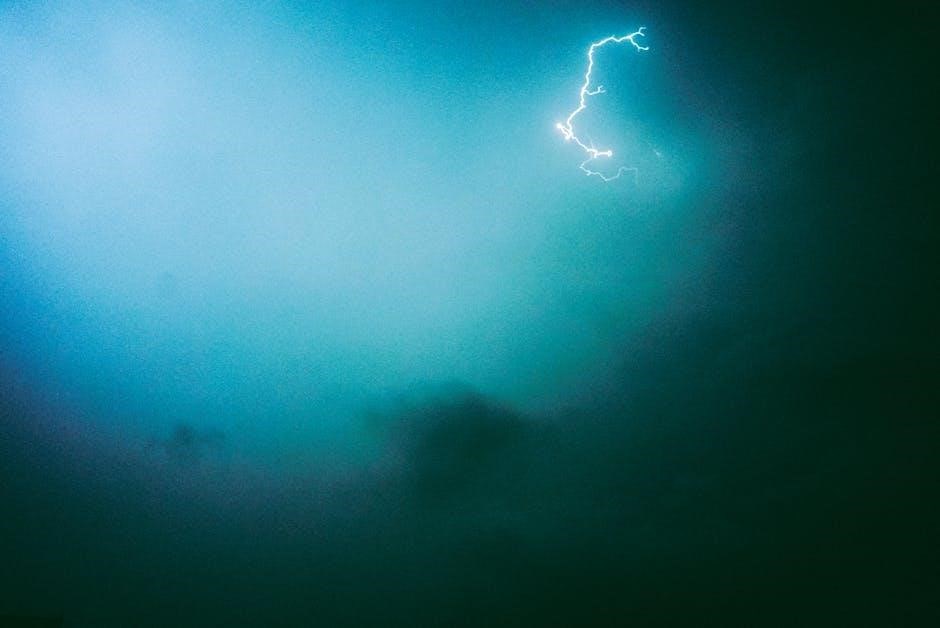Alfred, Lord Tennyson’s The Charge of the Light Brigade (1854) commemorates the heroic yet tragic Charge of the Light Brigade during the Crimean War, exploring themes of valor, duty, and sacrifice and its enduring impact on literature.
1.1 Overview of the Poem
The Charge of the Light Brigade, written by Alfred, Lord Tennyson in 1854, is a narrative poem that vividly captures the tragic events of the Battle of Balaclava during the Crimean War. It honors the bravery of the 600 British cavalrymen who followed flawed orders, riding into near-certain death. The poem is known for its emotional intensity and rhythmic structure, emphasizing the heroism and sacrifice of the soldiers. Tennyson’s vivid imagery and repetitive phrases create a sense of inevitability, while the poem’s tone reflects both admiration for the soldiers and criticism of the war’s futility.
1.2 Historical Context: The Crimean War and the Battle of Balaclava
The Crimean War (1853–1856) was a conflict between Russia and an alliance of France, Britain, and the Ottoman Empire, sparked by disputes over religious influence in the Holy Land. The Battle of Balaclava, fought on October 25, 1854, became infamous for the ill-fated Charge of the Light Brigade. This event occurred due to a miscommunication among British commanders, leading 600 cavalrymen to charge a heavily defended Russian artillery position. The battle highlighted both the valor of the soldiers and the catastrophic consequences of poor leadership, making it a pivotal moment in the war and inspiring Tennyson’s poem.

The Poem’s Structure and Style
Tennyson’s dactylic meter creates a rhythmic, galloping pace, mirroring the cavalry’s charge. Repetition and anaphora emphasize the relentless momentum, while vivid imagery heightens the dramatic tension and tragedy.
2.1 Rhyme and Meter: Tennyson’s Use of Dactylic Meter
Tennyson’s dactylic meter in The Charge of the Light Brigade creates a rhythmic, galloping pace, evoking the cavalry’s relentless charge. The meter’s stress pattern mimics the horses’ hooves, heightening tension and urgency. This poetic device underscores the poem’s epic and dramatic nature, while the rhyme scheme enhances musicality, making the verse memorable. Tennyson’s mastery of meter and rhyme transforms the tragic event into a powerful, enduring literary work, capturing the chaos and heroism of war with vivid precision.
2.2 Repetition and Rhythm in the Poem
Tennyson employs repetition and rhythm to amplify the poem’s emotional intensity. Phrases like “Forward, the Light Brigade!” and “Rode the six hundred” are repeated, creating a mesmerizing cadence that mirrors the relentless advance of the cavalry. The rhythm mimics the galloping horses, heightening the sense of urgency and inevitability. This technique not only builds momentum but also underscores the futility and heroism of the charge, immersing readers in the chaotic yet noble scene, making the poem both dynamic and unforgettable.

Major Themes of the Poem
The poem explores heroism and sacrifice, honoring the bravery of the Light Brigade, while also highlighting the futility of war, reflecting on unnecessary loss and tragic miscommunication.
3.1 Heroism and Sacrifice
Tennyson’s poem glorifies the heroism of the Light Brigade, portraying their willingness to sacrifice themselves in the face of certain death. The repeated refrain of “Forward, the Light Brigade!” emphasizes their unwavering determination and loyalty. Despite being vastly outnumbered, the soldiers charge into the “valley of Death,” exemplifying courage and duty. Tennyson’s portrayal highlights the tragic nobility of their sacrifice, immortalizing their bravery and discipline. The poem underscores the idea that true heroism lies in obeying orders, even in the face of overwhelming odds and inevitable loss.
3.2 The Futility of War
Tennyson’s poem subtly critiques the futility of war, highlighting the tragic consequences of miscommunication and poor leadership. The Charge of the Light Brigade, a disastrous military maneuver, resulted in heavy casualties for the British cavalry. The poem vividly captures the senseless slaughter, as six hundred soldiers rode into near-certain death. Tennyson’s depiction of the event underscores the harsh realities of war, where heroism and sacrifice often coincide with avoidable loss. The poem reflects on the human cost of conflict, questioning the logic behind such tragic events.
The Historical Event Behind the Poem
The Battle of Balaclava on October 25, 1854, saw 600 British cavalrymen charge Russian forces, resulting in heavy casualties due to miscommunication, symbolizing both bravery and tragic futility.
4.1 The Charge of the Light Brigade: A Military Perspective
The Charge of the Light Brigade was a ill-fated cavalry assault during the Battle of Balaclava in the Crimean War. Commanded by Lord Raglan, 600 British cavalrymen charged a heavily defended Russian artillery position due to miscommunication. The attack, though courageous, resulted in severe casualties, highlighting tactical failures and the bravery of the soldiers. This event remains a pivotal moment in military history, illustrating both the heroism of troops and the consequences of poor command decisions. The charge symbolizes the tragic realities of war.
4.2 The Role of Miscommunication in the Battle
Miscommunication played a pivotal role in the Charge of the Light Brigade. Conflicting orders from commanders led to confusion among the British cavalry. Lord Raglan’s directive to attack Russian artillery was misinterpreted, resulting in the ill-fated charge into a heavily defended position. This breakdown in communication caused the unnecessary loss of lives and highlighted the dangers of unclear instructions in military operations. The tragedy underscored the importance of precise communication in warfare, serving as a stark lesson in military strategy and coordination.
The Poem’s Language and Imagery
Tennyson’s vivid language and powerful imagery in The Charge of the Light Brigade evoke the chaos and intensity of battle, with phrases like “valley of Death” creating a dramatic atmosphere.
5.1 The Use of Metaphor and Symbolism
Tennyson employs metaphors like the “valley of Death” to symbolize the soldiers’ perilous fate, while repetition emphasizes their relentless advance; The “six hundred” represents sacrifice and duty, evoking admiration and sorrow. The “Charge” itself becomes a symbol of honor, despite its futility, highlighting the tension between glory and tragedy, making the poem emotionally resonant and historically significant;
5.2 The Emotional Impact of Tennyson’s Words
Tennyson’s vivid imagery and rhythmic cadence evoke profound emotions, capturing the bravery and futility of the soldiers’ charge. The relentless repetition of phrases like “Forward, the Light Brigade!” creates a sense of inevitability, while descriptions of the “valley of Death” evoke both awe and sorrow. The poem’s emotional depth lies in its ability to balance admiration for the soldiers’ valor with dismay at the tragic waste of life, resonating powerfully with readers and cementing its timeless appeal.

The Legacy of the Poem
The Charge of the Light Brigade endures as a powerful symbol of heroism and tragic loss, influencing literature, art, and popular culture, ensuring its timeless relevance and emotional resonance.
6.1 Its Influence on Literature and Popular Culture
The Charge of the Light Brigade has profoundly shaped literary and cultural narratives, inspiring countless adaptations, parodies, and references in films, literature, and media. Its vivid imagery and rhythmic style have influenced poets and writers, while its themes of heroism and tragedy continue to resonate in modern works. The poem’s iconic lines, such as “Into the valley of Death,” have become symbolic of courage and sacrifice, cementing its place in popular culture and ensuring its enduring appeal across generations and mediums.
6.2 The Poem’s Enduring Relevance in Modern Times
The Charge of the Light Brigade remains a powerful reflection on heroism, sacrifice, and the human cost of war, resonating with modern audiences. Its exploration of courage amidst futility continues to spark discussions on leadership and conflict. The poem’s emotional depth and vivid imagery make it a timeless piece, often studied in schools and referenced in popular culture. Tennyson’s mastery of language ensures its relevance, bridging the gap between the 19th century and today, offering insights into the complexities of war and human resilience.

How to Access the Poem in PDF Format
The poem is available in PDF format on various platforms like Google Books, Project Gutenberg, and university websites for free download and analysis.
7.1 Sources for Downloading the PDF
The poem is widely available in PDF format on platforms like Google Books, Project Gutenberg, and academic databases. Websites such as PDFDrive and Scribd also offer free downloads. Additionally, many university libraries provide access to the poem through their digital archives. Ensure to verify the credibility of the source for an accurate and complete version of the poem.Downloading from reputable sites guarantees a high-quality, readable format ideal for analysis and study.
7.2 Tips for Analyzing the Poem in a Digital Format
When analyzing the poem in a digital format, use the search function to locate key phrases like “valley of Death” or “six hundred.” Bookmark important stanzas for easy reference. Adjust font sizes and brightness for readability. Utilize annotation tools to highlight metaphors or themes. Compare digital versions with printed ones for consistency. Explore hyperlinked footnotes or commentary for deeper insights. Use side-by-side views to analyze structure and imagery. These strategies enhance comprehension and make digital analysis efficient and engaging.
The Charge of the Light Brigade remains a powerful tribute to courage and sacrifice, resonating through generations with its vivid depiction of war’s complexities and human spirit.
8.1 The Significance of “The Charge of the Light Brigade” Today
Tennyson’s poem remains a timeless tribute to courage and sacrifice, resonating with modern audiences by highlighting the human cost of conflict. Its vivid imagery and emotional depth continue to inspire literary studies and reflections on war’s futility. The poem’s themes of heroism and duty are universally relevant, making it a cornerstone of literary education and a poignant reminder of history’s lessons. Its enduring appeal ensures it remains a vital work in understanding both the past and present.
8.2 Final Thoughts on the Poem’s Timeless Appeal
The Charge of the Light Brigade endures as a powerful exploration of heroism, sacrifice, and the human cost of war. Its vivid imagery, rhythmic intensity, and emotional resonance continue to captivate readers, fostering reflections on duty, honor, and the tragedy of conflict. Tennyson’s masterpiece remains a vital work in literature, offering timeless insights into the complexities of war and the enduring spirit of those who face it. Its appeal lies in its ability to evoke both awe and sorrow, ensuring its relevance for future generations;
